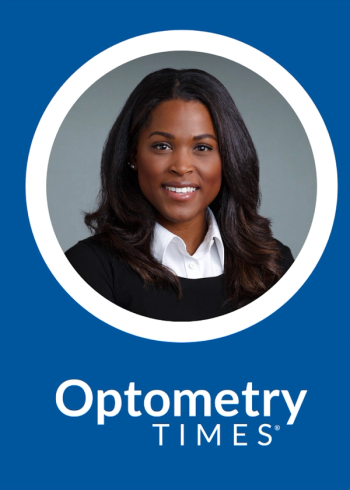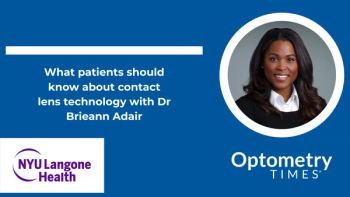
Experts offer tips for success in contact lens practice
Tom Quinn, OD, FAAO, led a panel discussion on tips for success in
The panel included:
• Chandra Mickles, OD, FAAO, in Fort Lauderdale, Florida
• Milton Hom, OD, FAAO, in Azusa, California
• Christopher Wolfe, OD, FAAO, in Omaha, Nebraska
Topics ranged from differences between general practice and specialty contact lens practice to the role of staff. Following are highlights from the discussion.
Related:
General practice vs. specialty contact lens practice
Hom: You need a general practice to feed into a specialty contact lens practice.
Wolfe: A nice becomes a larger part of the practice naturally because you can delve deeper into it.
Mickles: I get involved in the science as well as the heart of optometry as well even with contact lens practice.
Quinn: The variety keeps me engaged. I love seeing a
Related:
Role of staff
Mickles: I think of my students [at Nova Southeastern College of Optometry] as part of my staff and my liasion to specialty lens practice. They perform refraction, topography, ordering, ocular coherence tomography (OCT), and helping with ordering.
Wolfe: The staff helps to gather information. With specialty lenses, such as sclerals, I prefer to put the lens on the patient. But for other lenses, staff helps with that as well as ordering lenses.
Hom: My staff does everything except the stuff I have to do. We have a form that lists every lens a patient has tried, what has worked, what has failed, and the dates. I choose the first lens. It has a lot to do with my inventory.
Wolfe: I always choose the first lens.
Mickles: I think that is our role.
Quinn: One of my partners delegates a lot to his technician because she has been trained to do so. Often, she will choose the first scleral lens, then does an OCT to see the clearance, then takes the patient into the exam room.
Mickles: Staff helps with prior authorizations.
Wolfe: We use headsets in the office, so we assigned one person per doctor to be responsible for calls from the doctors. We have a relatively small office, so many staff are cross trained so they can jump in when needed.
Hom: I have lost staff due to the pandemic, so it’s like I have 2 different staffs: the previous employees and the new ones. Now I spend most of my time training. We have sessions twice a week. The expectation in my practice is they have to do everything. Who conducts the training depends on the training topic. If my senior staff can do the training, they will. Or I will. It takes place early in the morning or during dead times in the practice. I write an agenda on a whiteboard on what I want covered and who is leading the training. I have been doing this twice a week for the past month and a half.
Wolfe: You learned what to do because you had to. We are under the impression that we are jam packed during the day, but you need to be purposeful in finding open spots for training. If you don’t dedicate that time, then you take a phone call or do something else. On Wednesday mornings, we keep the front door locked for staff meetings.
Related:
Office systems and flow
Hom: According to insurance, you need to have a keratometry (K) reading [for contact lens fitting coverage]. No matter what you did, if you don’t have a K reading, it gets thrown out. I ask patients to remove their lenses so we can do the K readings and auto refractor measurements.
Mickles: We have set guidelines that students and staff have to follow for testing. We follow that order so it’s efficient.
Hom: If I was on a deserted island and had only 1 test, it would be case history.
Mickles: We instill fluorescien to look at tear film break-up time and the meibomian glands.
Hom: The best test for
Many tools don’t offer enough pressure [for gland expression]. If I can’t get anything out, I know the gland is atrophied. There is a difference between therapeutic and diagnositc experession.
Wolfe: I think there is value in those products. I think tools and manual expression are important. But there is the idea of real-world situation. What happens during the blink? For testing, I look for clinical justification.
Hom: You need a metric. If the contact lens fitting becomes a toxic relationship with the patient, it’s a problem. You need to measure their progress.
Mickles: The way to go is to set proper expectations. I set that at the beginning. I explain that success won’t happen in a week.
Related:
Final tips
Mickles: Use industry partners to help you succeed.
Wolfe: Don’t be afraid to try new stuff. Don’t change just to change, but change with purpose.
Hom: Staff is extremely important [in helping patient relationships], so I make them all wear contact lenses. They become cheerleaders. If your staff are talking about contact lenses and are enthusiastic, it is invaluable because patients spend most of their time talking with staff.
Newsletter
Want more insights like this? Subscribe to Optometry Times and get clinical pearls and practice tips delivered straight to your inbox.













































.png)


